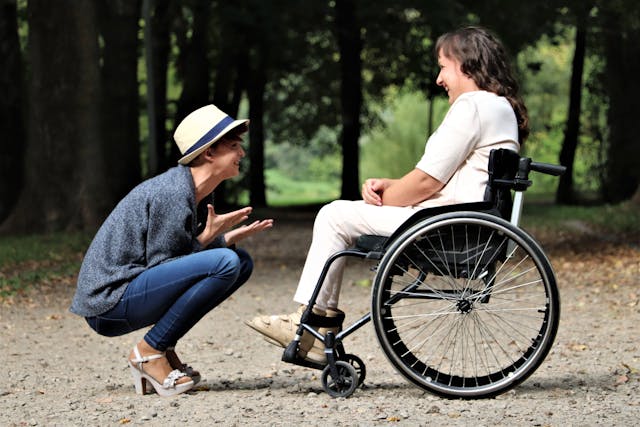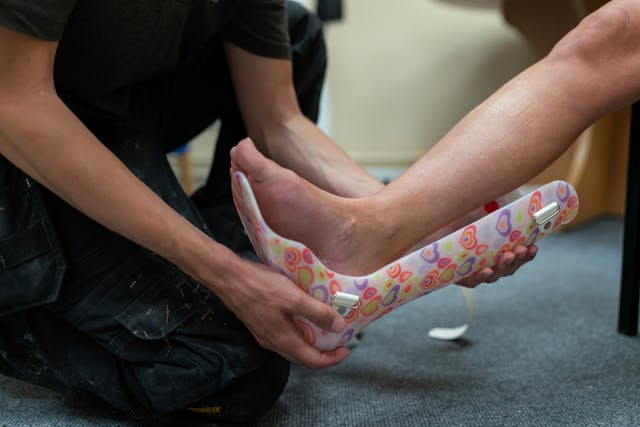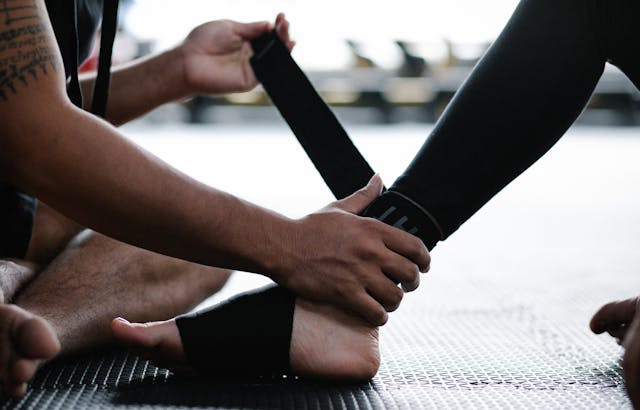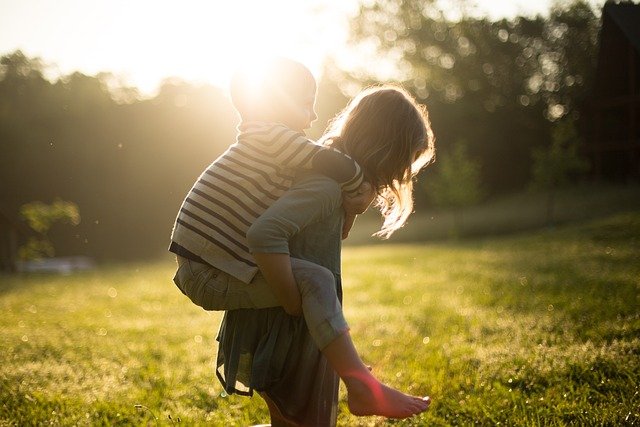When a child is born with weakness or limited movement in the arm, it can be a confusing and emotional experience for the entire family. One of the most common causes of this condition is Erb’s palsy. It happens during birth, often because of pressure on the baby’s shoulder, and can lead to reduced movement or even paralysis in the upper arm. While many children recover over time, some need long-term support — and that’s where prosthetic solutions can play a powerful role.
At Robobionics, we’ve worked with families across India who are navigating life with Erb’s palsy. We know that every child is different, and so are their needs. In this article, we’ll explain what Erb’s palsy is, how it affects children, and how prosthetics can help improve daily function and confidence. Our goal is to give you the knowledge you need to make the best decisions for your child’s future.
What Is Erb’s Palsy and Why Does It Happen?
Erb’s palsy is a type of birth injury that affects the group of nerves in the neck called the brachial plexus. These nerves help control the muscles of the shoulder, arm, and hand. If the nerves are stretched or torn during delivery, the baby may have trouble moving their arm, especially lifting it or bending the elbow. The condition is named after the doctor who first described it, and it’s more common than many people think.
The injury usually happens when there is difficulty during childbirth, such as when the baby’s shoulders get stuck. In such cases, pulling or pressure on the baby’s head or neck can stretch the nerves. Not all cases are the same — some are mild and heal quickly, while others may take months or years to recover. In rare situations, full recovery may not happen, and the child may be left with long-term weakness or limited use of the arm.
Parents often notice the condition soon after birth. The baby may not move one arm or may keep it close to the body with a bent wrist. Doctors usually confirm the diagnosis with a physical check-up and sometimes additional tests. Early detection is important because the sooner treatment starts, the better the chance of recovery. In cases where nerve recovery is slow or incomplete, prosthetic support can help the child gain more independence.
How It Affects Growth and Development

As the child grows, Erb’s palsy can affect more than just movement. It can also change how the arm grows and develops. In some cases, the affected arm may be slightly smaller or weaker than the other. This can make daily tasks like feeding, dressing, or playing more difficult. Even if the child adapts well, the difference in strength or range of motion can affect their posture and balance.
Children with Erb’s palsy may also develop habits to compensate for the weaker arm. For example, they may always use their stronger hand or shift their body to avoid using the affected side. While this helps in the short term, it can cause long-term issues like muscle imbalance or back pain. Therapy and early support are essential to encourage the child to use both sides of the body as much as possible.
At Robobionics, we understand how these small challenges can grow over time. That’s why we focus on gentle, supportive prosthetics that help children use their affected arm in safe and meaningful ways. Our goal is not to replace what’s missing, but to add function where it’s needed. With the right tools, children can move freely and keep up with others their age.
Emotional Impact on Children and Families
Beyond the physical challenges, Erb’s palsy can affect how a child sees themselves and how they interact with others. As they grow older, they may notice that their arm moves differently or looks different. This can lead to self-consciousness or even frustration. It’s natural for children to compare themselves with their peers, and any difference — even a small one — can feel like a big deal.
Parents and families may also feel overwhelmed. They may wonder if they’re doing enough, if recovery is possible, or how to explain the condition to others. While these emotions are completely normal, they can sometimes make it harder to focus on positive progress. That’s why emotional support, patience, and clear information are so important in the journey.
Robobionics believes that confidence and self-worth are just as important as movement. Our team supports families with education, community resources, and child-friendly prosthetic solutions. We work closely with therapists and doctors to create a care plan that includes both emotional and physical support. You are not alone in this — and your child’s journey can be full of strength, success, and pride.
When Prosthetic Support Becomes Helpful

Many cases of Erb’s palsy improve with time, therapy, or surgery. But in some situations, children continue to have difficulty using their arm even as they grow older. This is where prosthetic support can be very helpful. The goal of a prosthesis is not just to “fix” the arm — it’s to help the child do things more easily, more safely, and more independently.
Some children may have good shoulder strength but cannot bend their elbow or use their hand. Others may have limited control over the entire arm. A prosthetic device can support these areas and allow the child to perform tasks like holding objects, feeding themselves, or playing games. It’s also a valuable tool for encouraging two-hand activity, which is important for development and balance.
At Robobionics, we offer early-fit prosthetics for children who need extra support as they grow. Our devices are lightweight, easy to wear, and built with child-safe materials. We design each one based on the child’s age, needs, and comfort. If you’ve been told your child may benefit from a support device, or if therapy alone isn’t enough, we’re here to help you explore safe, flexible options for everyday use.
Types of Prosthetic Devices for Children
Prosthetics for children with Erb’s palsy can range from simple passive supports to more advanced functional devices. Passive prosthetics are used mostly for balance and appearance, while functional ones are designed to help with gripping, holding, and movement. The right type depends on the child’s level of strength, age, and daily activities.
For younger children, lightweight supports that hold the arm in a better position can be helpful during play and early learning. These devices prevent the arm from hanging loosely and help reduce the risk of joint stiffness. As the child grows older and becomes more active, a functional arm with a movable hand can offer even more benefits. Some advanced devices like Robobionics’ Grippy™ Kids Edition include flexible joints and multiple grip modes for better function.
We work with occupational therapists and parents to select the most suitable device for each stage of growth. Comfort and ease of use are always our top priorities. If your child has specific needs or challenges, we’re happy to design a personalized solution. Our goal is to help them participate fully — at school, at home, and with friends.
Combining Prosthetics with Therapy

A prosthetic works best when it’s part of a larger therapy plan. Occupational therapy and physiotherapy help train the child to use the prosthesis effectively. This includes teaching the brain to work with the device, building strength, and improving coordination. When a prosthetic and therapy are combined, progress often happens faster and feels more natural for the child.
Therapists guide the child through fun, purposeful activities that involve using both arms. These activities could be anything from stacking blocks to drawing or playing with toys. Over time, the prosthesis becomes a natural part of how the child moves and plays. This builds not only skill but also confidence, which is vital for emotional development.
At Robobionics, we provide therapy support materials and guides that work alongside our prosthetic devices. We also offer gamified home-rehab tools that turn practice into play. This makes it easier for children to stay motivated and for parents to track progress. If you’re already working with a therapist, we can coordinate with them to make sure your child gets the most out of both therapy and technology.
Helping Children Adapt and Thrive
The journey with Erb’s palsy doesn’t end with a diagnosis or a device — it continues with every new skill the child learns. Adaptation is a big part of this journey. It means helping the child find new ways to do things, supporting their creativity, and celebrating their achievements. With the right guidance, children with Erb’s palsy can lead full, active, and happy lives.
Adaptation is not about forcing the child to use the prosthesis all the time. It’s about giving them choices. Some days they may use the device for a specific task, and on other days, they may prefer not to wear it. That’s okay. What matters is that they feel in control, supported, and capable of doing what they want to do — in their own way.
At Robobionics, we believe in flexible solutions. Our pediatric prosthetics are designed for ease, comfort, and fun. We involve the child in the design process, letting them choose colors or themes, which makes the experience more exciting and personal. If your child is ready to explore what’s possible, we’re ready to walk the journey with you.
Encouraging Independence at Home and School

One of the key goals of using a prosthetic is to support independence. As children with Erb’s palsy grow older, they want to do things on their own — eat, dress, draw, and play. A well-fitted prosthetic can help them do all this and more, especially when combined with patience and practice. The sense of pride that comes from doing something alone is a powerful motivator.
In school, children with Erb’s palsy may face challenges during writing, sports, or group activities. A prosthesis can help them take part more fully, and teachers can be guided on how to support their learning without making them feel different. Confidence in the classroom builds confidence outside the classroom too, and it all starts with small wins.
Robobionics offers support not only for the child but also for parents, schools, and therapists. We help create care plans that fit into school routines, and we offer follow-up services to make sure the prosthesis stays comfortable and useful. If you’re thinking about how to support your child’s independence in school or at home, our team is ready to guide you every step of the way.
Long-Term Success and Monitoring Growth
As the child grows, their prosthetic needs will change. What fits and works today may need adjustments in a few months or years. That’s why long-term care is essential. Regular check-ups, growth monitoring, and device updates are all part of the journey. Staying ahead of these changes helps avoid discomfort and keeps the prosthesis useful as the child grows stronger and more active.
Children grow fast — and so do their skills. The prosthetic must grow with them. Whether it’s upgrading a passive support to a functional device, or making small changes for comfort, staying in touch with the care team makes a big difference. The child’s goals may change too, and the prosthetic should always support their dreams, not limit them.
At Robobionics, we build long-term relationships with our users. We offer device upgrades, growth assessments, and easy repair services across India. Our mission is to walk alongside your family through every stage — from the first fitting to the final flourish of independence. You can count on us to be there, year after year.
Parental Involvement and Support at Every Stage

No child walks the path of Erb’s palsy alone. Behind every child’s progress is a parent or caregiver who plays a steady, patient, and deeply loving role. Whether it’s attending therapy sessions, managing daily routines, or simply offering emotional comfort, parents are the core of a child’s recovery journey. Their involvement makes a lasting difference — not just in physical improvement, but also in how the child feels about themselves and their abilities.
Creating a Supportive Home Environment
Children learn and grow best in an environment where they feel safe, encouraged, and capable. For a child with Erb’s palsy, the home becomes the first training ground for independence. Small changes can help build a space that allows the child to use both hands, try new movements, and practice wearing their prosthesis without stress.
Simple things like placing objects within reach, using child-friendly utensils, and making time for practice during play can go a long way. More importantly, parents can model a positive attitude toward the prosthesis, showing that it’s not something strange — but something helpful. The goal is to make the device feel like a normal part of life, not something to hide or be afraid of.
Supporting Emotional Well-Being and Confidence
One of the biggest roles parents play is in shaping how their child sees themselves. Children are sensitive to how others react to their differences. If they sense worry or discomfort from the people around them, they may start to feel less sure of themselves. That’s why open, honest communication and steady encouragement from parents can have such a strong impact.
Helping your child understand their condition in a way that feels safe and empowering is an important step. As they grow older, they will have questions — about why their arm is different, what the prosthesis does, and how others might see them. It’s okay not to have all the answers. What matters most is listening, responding with love, and showing them that their uniqueness is something to be proud of, not ashamed of.
Staying Involved in Therapy and Device Use

Therapy and prosthetic use are not just once-a-week events. They are part of a child’s daily life. And when parents stay involved, children stay motivated. Attending therapy sessions, learning how the prosthesis works, and keeping track of progress at home helps create a strong and steady rhythm of improvement.
Being involved also means helping your child set small goals — like picking up a cup, putting on a shirt, or drawing with both hands. Celebrate each success, no matter how small. Progress often comes in tiny steps, and your support makes each one feel meaningful. When the child knows their parent is watching, cheering, and helping, they’re more likely to try again — even when it’s hard.
Conclusion: Every Child Deserves a Chance to Thrive
Erb’s palsy may begin as a challenge, but it does not have to define a child’s future. With the right care, early therapy, and the right prosthetic support, children can learn, grow, and achieve everything they dream of. They can play, make friends, go to school, and build confidence in their abilities — all with a little help, a lot of love, and the right tools at their side.
At Robobionics, we are proud to support children and families through this journey. We understand the hopes, the fears, and the endless questions that come with a diagnosis like Erb’s palsy. And we’re here to offer answers, encouragement, and advanced prosthetic solutions that are made with care and designed for kids.
If your child has Erb’s palsy and you’re exploring prosthetic support, book a free consultation with our team. Let’s create a path forward — one step, one smile, one success at a time.



